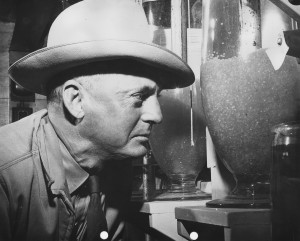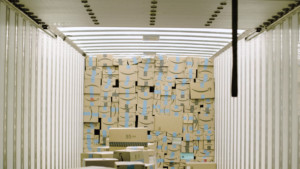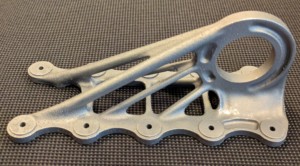 In my last couple of posts I looked at design for manufacturing and assembly DFMA. However, there is more out there. Often, they are grouped as Design for X, where X could be anything related to the product life cycle, including development, production, shipping, servicing, use, disposal, and many more. There seems to be a large number of more-or-less well-known terms that are used somewhere. Many of them claim to be essential, but not all are. If you try to do them all, you will never get the design done. Focus on the ones that are most promising for your case. After all, all designs are designed for something, usually a trade-off of functionality versus cost. This is sometimes also known as design to cost.
In my last couple of posts I looked at design for manufacturing and assembly DFMA. However, there is more out there. Often, they are grouped as Design for X, where X could be anything related to the product life cycle, including development, production, shipping, servicing, use, disposal, and many more. There seems to be a large number of more-or-less well-known terms that are used somewhere. Many of them claim to be essential, but not all are. If you try to do them all, you will never get the design done. Focus on the ones that are most promising for your case. After all, all designs are designed for something, usually a trade-off of functionality versus cost. This is sometimes also known as design to cost.
Design for Inspection
 Design for inspection aims (unsurprisingly) to improve the design for easier inspections. Here, inspection most often means inspection during and shortly after manufacturing to ensure that the parts are produced within the tolerances. Since there is usually much less inspection than manufacturing, the potential is also less than design for manufacturing and assembly.
Design for inspection aims (unsurprisingly) to improve the design for easier inspections. Here, inspection most often means inspection during and shortly after manufacturing to ensure that the parts are produced within the tolerances. Since there is usually much less inspection than manufacturing, the potential is also less than design for manufacturing and assembly.
Nevertheless, if your production process has a lot of inspection, you may consider checking your options here. This overlaps quite a bit with Jidoka, the idea that machines stop automatically if there is a problem. The famous example is the Toyoda Model G loom, which stops automatically if a warp breaks as shown in the video below.
For this warp-break auto stop, there was no need to change the design. However, in other cases, a small design change may make detection much easier. For example, the flammable gas used for cooking and heating in many houses is naturally odorless. If there would be a leak, no one would know until the whole house explodes. Therefore, the gas plants add another gas that has a very strong smell of rotten eggs. Your nose can now detect a gas leak, and you can take countermeasures (turn off gas, open windows, evacuate, etc.)
Design for Maintenance
 Design for maintenance aims to make maintenance and service operations easier. This is often neglected, since service and maintenance is often paid for by the customer. It is also sometimes used to increase profit by enabling the sales of more goods. For example, in some cars you have to exchange the entire headlight unit if a light bulb is burned out. The cost for the consumer is much larger, as is the profit for the company. Some car makers also put the battery in hard-to-access locations (behind the wheel, under the driver seat, etc.). In sum, design for maintenance is not an issue for many companies, although you can make life easier for your customers.
Design for maintenance aims to make maintenance and service operations easier. This is often neglected, since service and maintenance is often paid for by the customer. It is also sometimes used to increase profit by enabling the sales of more goods. For example, in some cars you have to exchange the entire headlight unit if a light bulb is burned out. The cost for the consumer is much larger, as is the profit for the company. Some car makers also put the battery in hard-to-access locations (behind the wheel, under the driver seat, etc.). In sum, design for maintenance is not an issue for many companies, although you can make life easier for your customers.
Design for Logistics
 Design for logistics is yet another topic related to but significantly smaller than design for manufacturing and assembly. The goal here is to reduce logistic costs. Often, this is more about the packaging than the product itself. Can you make the packaging so it fits well into a larger container or onto a pallet? A good package fits well onto standard pallets. Is the packaging robust enough? More robust packaging may be more expensive but may save money on additional padding for shipping. Is it easy to repack and track?
Design for logistics is yet another topic related to but significantly smaller than design for manufacturing and assembly. The goal here is to reduce logistic costs. Often, this is more about the packaging than the product itself. Can you make the packaging so it fits well into a larger container or onto a pallet? A good package fits well onto standard pallets. Is the packaging robust enough? More robust packaging may be more expensive but may save money on additional padding for shipping. Is it easy to repack and track?
 A good example here is Ikea, the famous Swedish furniture store. The concept is that the customer assembles the furniture. The packages of Ikea are designed to be as compact as possible, so the company ships less air and more products. This compact package can also more easily be carried. If the product is too big, Ikea uses multiple smaller packages rather than one big one that the customer can no longer lift. They are also using more and more renewable packaging material, including honeycomb paper inserts instead of plastic foam.
A good example here is Ikea, the famous Swedish furniture store. The concept is that the customer assembles the furniture. The packages of Ikea are designed to be as compact as possible, so the company ships less air and more products. This compact package can also more easily be carried. If the product is too big, Ikea uses multiple smaller packages rather than one big one that the customer can no longer lift. They are also using more and more renewable packaging material, including honeycomb paper inserts instead of plastic foam.
Design for Administration
 This one falls a bit outside of the scope of the other Design for X approaches. First of all, I just made the term up. Second of all, here you optimize not a product but an administrative process or service. Can you design your paper forms or computer interfaces in a way so that they are easy to use? Are the forms easy to understand using a language that the audience can understand? A form used by engineers can, for example, be more technical than a form used for the layman. Is it clear where to fill things out? Does the color coding of a software interface help? Are certain steps even necessary?
This one falls a bit outside of the scope of the other Design for X approaches. First of all, I just made the term up. Second of all, here you optimize not a product but an administrative process or service. Can you design your paper forms or computer interfaces in a way so that they are easy to use? Are the forms easy to understand using a language that the audience can understand? A form used by engineers can, for example, be more technical than a form used for the layman. Is it clear where to fill things out? Does the color coding of a software interface help? Are certain steps even necessary?
I once came across a person whose job it was to compare the results of one computer with the result of another computer to see if there was any difference … all day long. I asked him if he ever found a difference, and he said, “No, but I’ve been working here for only six months now.” I just felt sorry for him. Anyway, even though I just created the term “design for administration,” I believe the idea behind it is quite viable.
Design for Additive Manufacturing
Design for additive manufacturing is a more specialized topic if you design parts for 3D printing and similar production approaches. This is often specific to the technique employed. For example, laser sintering has difficulties in getting the powder out of long, thin tubes. Fused Deposition Modeling, on the other hand, needs support structures for overhangs. Laser sintering may need these too, due to the thermal expansion and shrinking of the part during production.

Other aspects are less specific to the 3D printing technique. Since there is a lot of flexibility in the geometry, it is possible to design parts in an almost natural-looking shape, where you add material only where needed and leave it out where not. The inside of parts also often have a honeycomb or lattice structure to provide stability while reducing weight and production time.
Design for Interchangeability
 If you make multiple similar products, it can really help if they are interchangeable. This makes upgrading or downgrading much easier. For example I have a normal shower handle valve. I would have liked to exchange it with a higher grade temperature controlled shower valve. The valve sits in a plastic box in the wall for easy installation and maintenance. Unfortunately, this plastic box is not compatible with the temperature controlled valves from the same brand 🙁 . Upgrading would now require chiseling out part of the wall.
If you make multiple similar products, it can really help if they are interchangeable. This makes upgrading or downgrading much easier. For example I have a normal shower handle valve. I would have liked to exchange it with a higher grade temperature controlled shower valve. The valve sits in a plastic box in the wall for easy installation and maintenance. Unfortunately, this plastic box is not compatible with the temperature controlled valves from the same brand 🙁 . Upgrading would now require chiseling out part of the wall.
Another example from the same shower. The hand shower was in an angled holder. To save space in my shower I wanted to replace it with a straight holder from the same brand as shown in the picture. For some unknown reasons the holes in the straight holder were 5mm more apart than in the angled holder. I managed to get the screws into the same drilled holes, but it was not a pretty process 🙁 . A little bit of foresight during design would have my process easier, and the maker could have sold another shower handle valve to me.
Design for Environment
 Another aspect relevant nowadays and probably even more relevant in the future is the design for environment along the entire product life cycle, or the very similar design for recycling focusing on the product end of life stage. The goal here is to reduce the overall impact on the ecosystem.
Another aspect relevant nowadays and probably even more relevant in the future is the design for environment along the entire product life cycle, or the very similar design for recycling focusing on the product end of life stage. The goal here is to reduce the overall impact on the ecosystem.
This can have multiple aspects. Are your materials and energy from a renewable source? Is the material biodegradable? Or is it even recyclable with reasonable effort? Anything can be recycled if you just pump enough money in, but if it is too expensive it won’t be. Can it be disassembled easily for recycling? Or can it be even reused or refurbished to avoid recycling for one more life cycle. Is it energy efficient and/or carbon neutral?
There is a lot of activity ongoing, but it is always hard to tell how much is actually happening and how much is just marketing. The underlying problem is that while a design for environment benefits all, the expenses are usually with the manufacturer. Many CEOs do indeed want to help the environment, but they still have to watch the bottom line. A very green company does no good if it is bankrupt. Luckily, both legal changes to force responsibility and the pressure by customers and society are slowly changing the manufacturing environment. But there is still a lot to do if we want to stop global warming.
Anyway, I digress. What I wanted to show you in this post is that there are many more possible aspects to improve a product through a Design for X. However, not all of them are for everybody (but please take heart to the design for environment). You have to find out which one is helpful for you. Now go out, design your products for X and the environment, and organize your industry!
